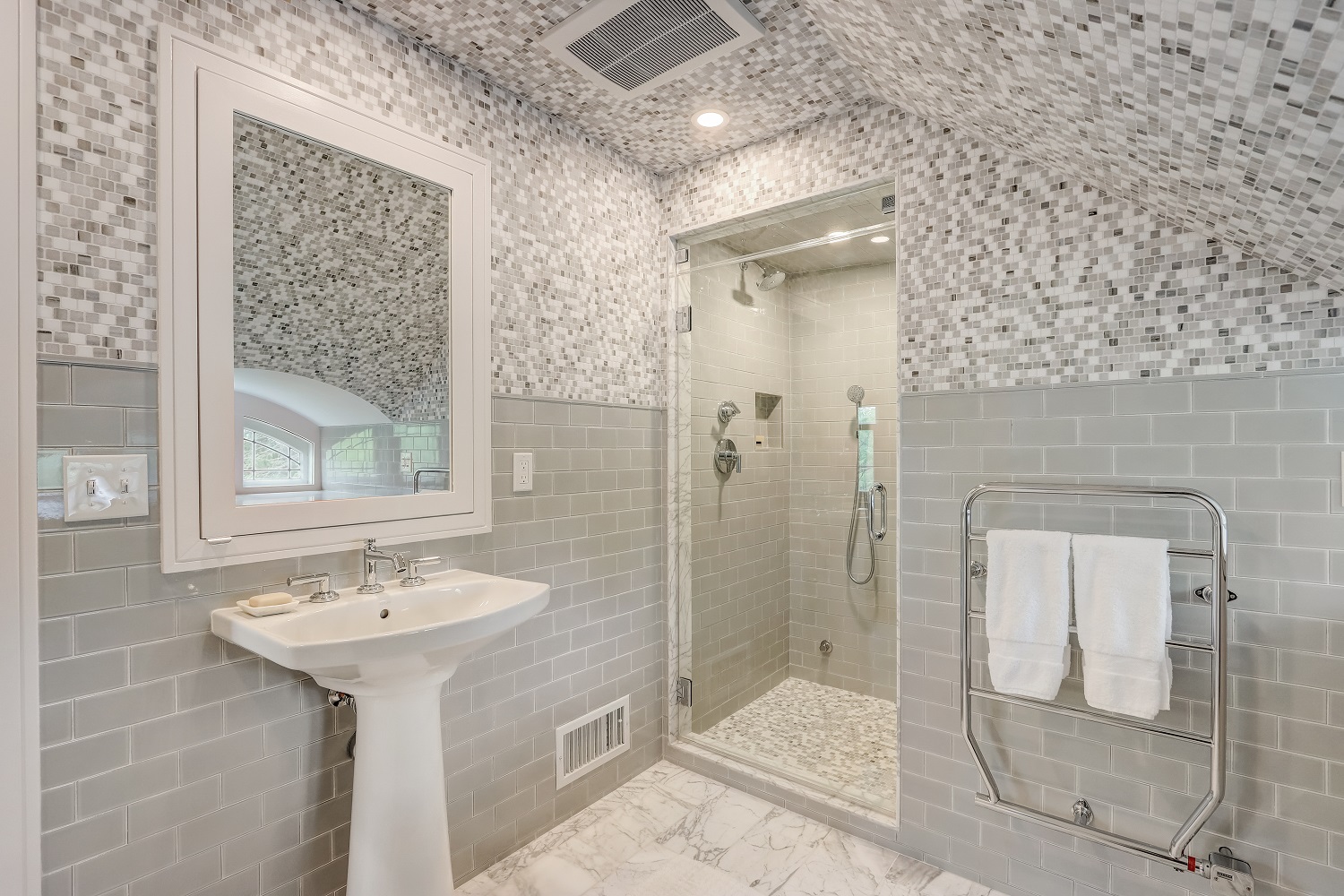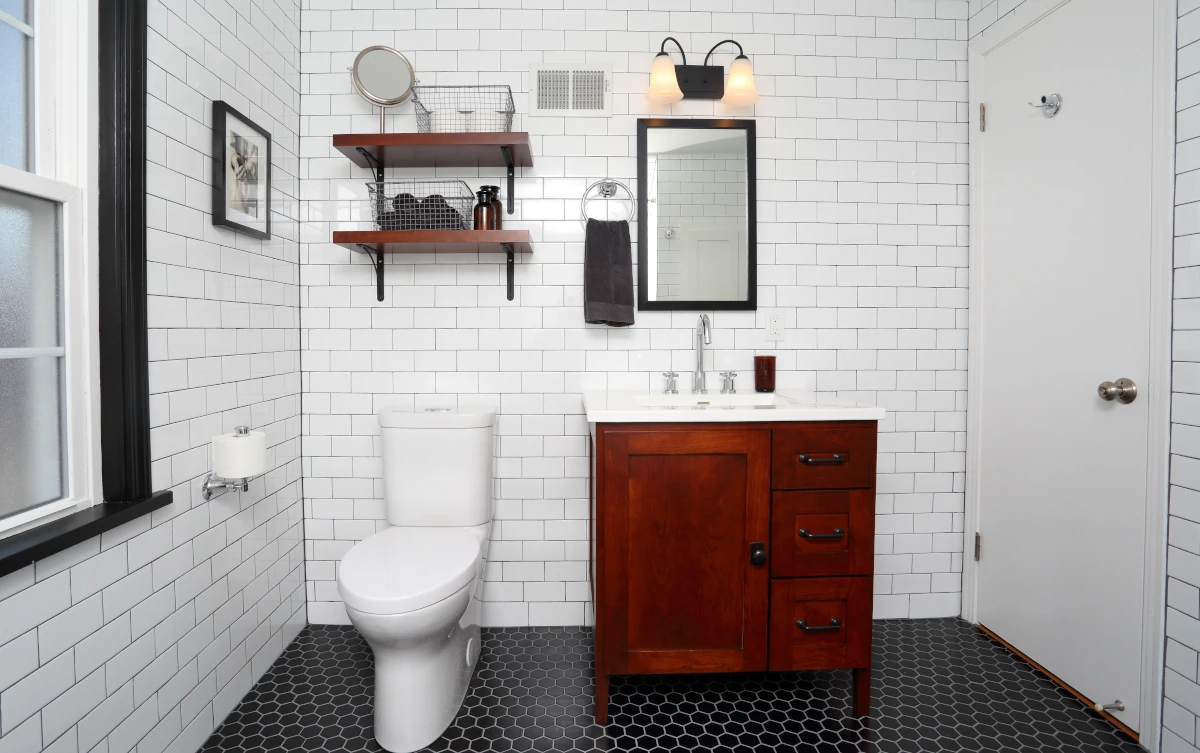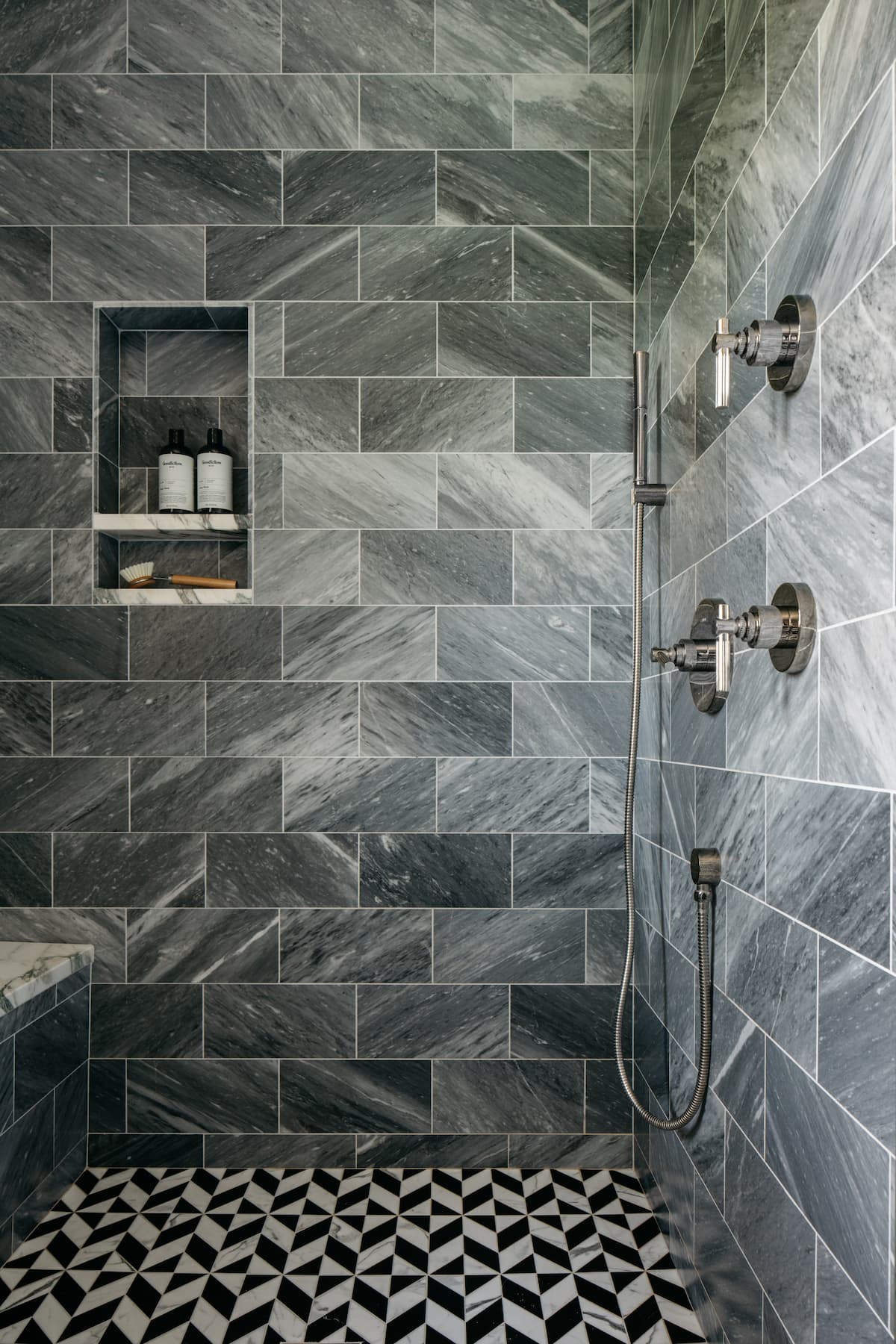Designing an accessible bathroom does more than accommodate wheelchair users or people who have otherwise limited mobility. Integrating universal design principles into your bathroom is a great opportunity to create a comfortable space for people of all ages, sizes, and abilities.
An Accessible Bathroom is a Wise Investment
Remodeling a bathroom for accessibility is also a wise investment, especially if you plan to stay in your home into your later years, when mobility often decreases.
Improving accessibility will also increase the value of your home, as well as the pool of potential buyers if you decide to sell.
Also, with innovations in building materials and design in recent decades, the traditional clunky bars and handles that exclaim “accessibility” have evolved into attractive design elements that integrate seamlessly into the modern accessible bathroom.
Private residences are not required to meet Americans With Disabilities Act (ADA) rules, but the ADA offers helpful guidelines to keep in mind for maximizing accommodations when remodeling.
But even if the dimensions are not as the ADA suggests, new technology and innovative products on the market today can still make your bathroom more accessible.
Entering and Maneuvering
To accommodate a standard wheelchair—generally 24 to 27 inches wide—the width of your doorway should be at least 32 inches. But a 36-inch wide doorway is recommended for even better maneuverability, and to make room for wider chairs.
To ensure a smooth ride into the room, you also want to remove the bump on the floor—known as a door sill—at the bottom of the threshold.
Floor Space
At least 60 inches of open floor space is recommended to allow adequate turning space for wheelchairs.
Door Options
If you have a small bathroom—especially common in older houses—a major space challenge may be an inward-swinging door. An outward-swinging door would offer an improvement, but not all spaces can accommodate one.
Pocket Door
An ideal option for your bathroom remodel is a pocket door—one that slides into the wall. It saves space, and many handle options offer easier operation for people in wheelchairs than traditional doors.
Slip-Resistant Flooring
Using slip-resistant vinyl floor surfaces can provide more stability. Avoid using unsecured area rugs, which can be particularly hazardous for less sure-footed people and those using a walker or wheelchair.
Sink and Vanity in an Accessible Bathroom

Floating Vanity
To use a standard vanity with storage cabinets beneath, wheelchair users must lean forward across their laps—or to the side over the armrest—to reach the sink and water handles.
With a floating vanity mounted on the wall (with a 27” clearance beneath for knees), a wheelchair user can roll the chair beneath the vanity and maintain better posture while accessing the sink.
Adding a motion-activated, infrared faucet further reduces the need for stretching and fine motor movements. While the initial cost of such a faucet may be higher, the lack of movable (and breakable) parts reduces maintenance costs over time.
If investing in a hands-free faucet is problematic, consider installing a single-handed faucet to make accessing water easier.
Tilted Mirror
Accommodating wheelchair users doesn’t necessarily mean mounting the mirror lower on the wall. Instead, you can replace your standard mirror with a tilted mirror.
Toilet in an Accessible Bathroom

Accessible toilets are designed to be the same height as a standard wheelchair—about two inches higher than standard-height toilets—so users don’t have to hoist themselves to a higher level to return to their chair.
Also, because higher toilets require less bending and reduce pressure on the knees, they can increase comfort for all users.
Raising Existing Toilets
There are a number of options for raising your existing toilet. Items you can install include a thicker toilet seat, a toilet riser, or an elevated toilet seat.
However, a better permanent solution may be to have a professional remodeler replace your toilet with a wall-hung model that can be mounted at the appropriate height. This would also be an opportunity to include a motion-activated, infrared sensor for automatic flushing.
Bidet
If you opt to replace your toilet, you may want to consider one with an integrated bidet.
Commonly used throughout other parts of the world instead of toilet paper, a bidet also can help people who lack the flexibility, dexterity, or strength to use paper effectively by themselves.
Just remember to plan for an outlet near the toilet so there’s power for the bidet.
- See also: Our post on Smart Toilets: A Glimpse Into The Future.
Shower/Bath

Most bathroom injuries are suffered during bathing and showering, and these activities are especially dangerous for people with mobility issues. Make sure your bathroom remodeling project addresses this important area.
Walk-In Tub
People who can’t stand up in the shower or who have trouble getting in and out of a regular bathtub can meet their daily hygiene needs with a walk-in tub.
If there’s space to roll a wheelchair beside a walk-in tub that includes a seat, transferring to the tub can be as easy as using the toilet.
Additionally, a walk-in tub’s ease of use allows users with physical limitations to bathe more frequently, improving personal hygiene and overall health.
Because walk-in tubs are available in a wide variety of sizes and designs, you can almost certainly find one to fit in your existing tub space.
Alternatively, choosing a smaller tub could create storage opportunities to help offset any storage space you may sacrifice in other areas of the room.
Recess Storage
You may be able to add even more storage space by creating wall niches in strategic areas, such as near the tub or shower, the toilet, or the vanity.
Lighting in an Accessible Bathroom
Consistent lighting throughout all areas of the bathroom is crucial for users with diminished vision. Adding supplementary features such as vanity lighting and LED panels can make navigating the room much easier for everyone. Use natural light as much as possible.
Wall Switches
Consider lowering light switches or any other wall controls to improve access for wheelchair users. Also, if you have pull chains, make sure they’re long enough to reach and easy to grip.
Contrasting Colors
Similar to higher-contrast color settings on computer monitors for the visually impaired, contrasting colors in the bathroom can help those with sight-related challenges find their way safely. For example, having a darker shower floor and lighter walls helps with depth perception and movement.
Improving Balance
As Cindy Kelly, Associate Kitchen and Bath Designer (AKBD) and Certified Living in Place Professional (CLIPP) has pointed out, horizontally oriented wall treatments and designs have been shown to help stabilize people with balance issues and ease cases of vertigo.
Designing the Perfect Bathroom Space
You don’t have to be in a wheelchair or otherwise physically challenged to enjoy the benefits of universal design in the bathroom. It’s important to remember that accidents and unexpected injuries can present immediate mobility limitations to any person, at any time, at any age. Even if you’re only temporarily injured—reliant on crutches or a cane—universal design can be a life-saver.
Please contact us at LaBonte Construction when you’re ready to begin your accessible bathroom remodeling project.

